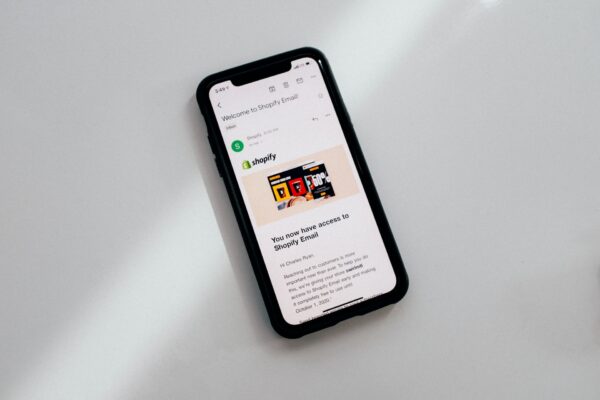Ever stared at GA4, Search Console, or Hotjar and thought, I have no idea what any of this means together?
You’re not alone.
Most marketers have a tech stack overflowing with analytics tools but still make decisions based on gut feelings or incomplete snapshots. In today’s world, where customers bounce between search, social, digital ads, email, and your website in a single day, understanding a single touchpoint just doesn’t cut it. You need a complete view, what we call a conversion chain, that helps you understand what’s working, what’s broken, and most importantly, what to fix first.
When you map your tools to each stage of that chain, something powerful happens: the chaos quiets. You can more easily separate the signal from the noise and see how people move through your funnel.
Let’s break down the five core stages of the conversion chain and the tools Modern Foundation uses to measure and improve each one.
Step 1: Impressions: Make Sure You’re Seen
If people never see your brand, they can’t click.
If they can’t click, they can’t convert.
Visibility is the starting point, one of the most misunderstood metrics in digital marketing.
We use Google Search Console and SEMrush to gauge visibility and find growth opportunities. Search Console shows you the organic queries triggering your pages, along with organic impressions, position, and click-through rates. It’s your first line of defense for understanding how you appear in organic search.
But raw visibility isn’t enough. That’s where SEMrush comes in. It lets us analyze your competitors, find keyword gaps, and identify areas where your site could gain traction but isn’t showing up yet. You get a strategic roadmap for content creation and SEO improvements by overlaying competitor performance with your data.
Quick tip: Don’t treat impressions like a win. High impressions with low clicks often mean you’re surfacing for the wrong intent or you’re ranking too low to matter. Cross-reference keywords with search intent and map them to a defined stage in the funnel. Are you showing up for early-research queries when you’re aiming for conversion-ready buyers?
Step 2: Clicks: Measure Interest, Not Just Eyeballs
So you’ve earned some visibility. Great. But if those impressions aren’t turning into clicks, you’re just wallpaper in the search results.
Google Search Console continues to be the MVP here, giving you granular insight into which queries generate clicks, and just as critically, which ones aren’t. It tells you whether your content is doing its job in the SERP: pulling the right traffic with compelling meta titles and descriptions.
From there, we bring in GA4 to dive into how people get to your site. GA4 tracks all traffic sources – organic, paid, social, referral, email – and when paired with clean UTM parameters, it tells a clear story: which channels are pulling their weight and which are dead weight.
This is where campaign-level analysis becomes crucial. It’s not enough to say “email is working” or “social is underperforming.” You want to know which email. Which ad. Which piece of content. The more granular your tagging strategy, the more precise your insights.
Pro move: Review your top-performing landing pages monthly. If a page has great visibility but a low click-through rate, your metadata may be the problem. A simple rewrite of your title tag or description – one that speaks directly to searcher intent – can make a bigger difference than a complete content overhaul.
Step 3: On-Site Behavior: Watch What They Do
A click is progress, but it’s not the finish line.
If visitors bounce right away, get lost in your navigation, or abandon a page halfway through, your funnel leaks, and you won’t find that leak in GA4 alone.
That’s why we rely on tools like Hotjar and Microsoft Clarity. These platforms go beyond numbers and give you a window into actual user behavior. Heatmaps show where people are clicking (or not clicking). Scroll maps reveal how far users make it down the page. Session recordings let you watch real journeys, including mouse movements, hesitation points, rage clicks, etc.
This layer of behavioral insight is where many marketers unlock their biggest wins.
Hot tip: Use behavioral data to support your analytics. GA4 tells you what happened. Hotjar and Clarity tell you why.
Step 4: Speed: Don’t Let a Slow Site Tank Your Results
We’ve said it before and we’ll say it again: speed kills conversions. All the strategic content in the world can’t overcome a slow-loading site.
Users tend to bounce if your site takes more than a few seconds to load, especially on mobile. And worse, Google starts to penalize you in search rankings.
Use Google PageSpeed Insights, GTmetrix, or a similar tool to monitor site performance. These tools give you a full breakdown of what’s slowing your site down, whether it’s render-blocking JavaScript, uncompressed images, or server issues.
Common mistake: Brands focus on optimizing the desktop experience while mobile continues to suffer. That’s a massive missed opportunity. Your mobile experience is the experience for most users. Run mobile-specific speed tests and address performance issues separately from desktop.
Step 5: Conversion: Test, Learn, Repeat
Now we’ve reached the step everyone’s chasing: conversion.
Whether it’s a product purchase, lead submission, appointment booking, or phone call, this is the outcome that defines whether your funnel is working. Unfortunately, this is also the stage where most businesses leave money on the table by guessing instead of testing.
Tools like Optimizely help you A/B test everything from headlines and CTA buttons to layouts and messaging hierarchy. Smart testing isn’t about wild ideas or “what-if” experiments. It’s about taking what you’ve learned from earlier stages, especially behavioral insights, and applying them with intent.
For example, if Hotjar shows users are fixating on a block of copy that isn’t clickable, maybe that’s your next CTA location. If GA4 shows that form submissions drop sharply on mobile, maybe your form is too long or the fields are too hard to tap.
Pro tip: Always start with a hypothesis grounded in data. “We believe moving the CTA above the fold will increase form fills” is a test worth running. “Let’s see what happens if we change the button to orange” is a waste of time unless there’s a behavioral reason to try it.
Bringing It All Together: Don’t Just Collect Data. Connect It.
Every tool in your stack is only as good as the question it helps you answer.
Instead of tracking dozens of disconnected metrics, build a toolchain that maps to your customers’ actual journey: visibility, interest, behavior, speed, and conversion. When each tool is assigned a specific role in diagnosing funnel friction, you move from guessing to knowing, from scrambling to scaling.
You stop collecting dashboards. You start fixing real problems.
Because tools don’t build strategy, but when used with precision, give you the clarity and confidence to make marketing decisions that move the needle and drive real business outcomes.
Need help clearing up your marketing tool set and breaking through the clouds? Contact us.







